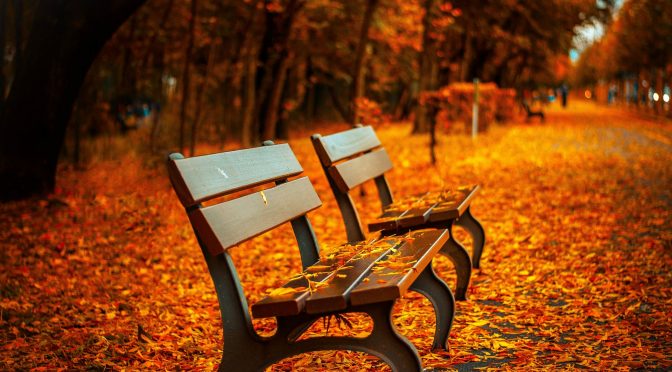Labor Day has come and gone, and even as the temperatures soar and the garden is reaching the end of its peak summer production, it’s time to grab a cold drink, find some shade, and start making plans for your fall garden. Far from being the end of the gardening year, fall offers abundant opportunities for cool weather crops. Thoughts of fall are probably the last thing on your mind right now. But by planning, and where appropriate planting now, your landscape and garden will be ready to flourish this fall.
Keep them Growing
As garden herbs start to bolter, cut them back to keep the plant producing new foliage rather than going to seed. For tomato or pepper plants that have stopped producing due to the heat, just remove any dead leaves, keep them watered, and they should start to bear fruit again when cooler fall weather arrives.
Clean it up
Remove any dead or spent plants from the garden, and if they are not diseased, add them to your compost pile. Pull any weeds that may have started to take hold.
Amend the Soil
Add compost to garden beds and till into the soil. This will help replace nutrients taken up by the previous planting.
Draw a Plan
You don’t need a degree in art or an expensive software program to draw a rough sketch of your landscape and garden plan. If you have the original survey from when you bought your house, make a copy of it and use that as a starting point. If not, just make a rough sketch of the footprint of your home. Draw in existing landscape features, and planned garden areas. Indicate which way is north and make note of any shady or poorly drained areas.
Add Fall Color
Look at your landscape as a whole and determine what native or locally adapted fall flowers are best suited to the different areas of your yard based on their color, size, water requirements, and the amount of sun needed. By planting now, they will be well established and ready to flower come fall.
Grow What You Like
Make a list of the fall vegetables for your area that your family likes and rank them from most to least liked.
Some Cool Weather Favorites are: Arugula, Beets, Bok Choi, Broccoli, Brussels sprouts, Carrots, Cabbage, Cauliflower, Collards, Cress, Endive, Garlic, Kale, Leeks, Mustard Greens, Onions, Peas, Radishes, Spinach, and Turnips.
Plan to plant what you like. If no one in your family likes beets or brussels sprouts, for example, then plan on planting more of what is most liked.
Crop Rotation
Be sure to check out our Crop Rotation in the Home Garden Guide for tips on which vegetables you should and shouldn’t plant in the same spot right after each other.
Can, Store, or Eat
Decide what the intended use for each vegetable and herb will be. Do you plan on canning enough to last through the winter? Will you be freezing or dehydrating, or will you just eat and enjoy what you harvest this fall. Different varieties of many vegetables are better suited to a specific purpose such as canning. Do your research.
Add New Beds
Now that you know what you will be planting and what your harvest will be used for, you can determine how much of each variety you should plant. Look at your existing bed space and any areas of your yard that you may want to convert to garden beds. For new beds, avoid low-lying, poorly drained areas. Clear the ground, till and amend the soil now.
Order Seeds Now
Now that you’ve determined which vegetables, what varieties, and how many of each you will be planting this fall, order your seeds now. This will ensure that you get exactly what you want and have them ready to plant when the time arrives. Be sure to check out our comprehensive Seed Source Guide for an alphabetical listing of many sources of Seeds, Transplants, and Bulbs for Vegetables, Herbs, Flowers, Grains, Grasses, Ground Covers, Vines, Fruits, Sprouting, Trees, Wildflowers, and much more.
Don’t Lose Track of Today
Remember to enjoy each day on its own merit. It’s easy to get worn down by the heat, the weeding, and the canning. But don’t let the anticipation of your fall garden, and the promise of cooler temperatures yet to come, distract you from today. Remember, “To everything there is a season.”


